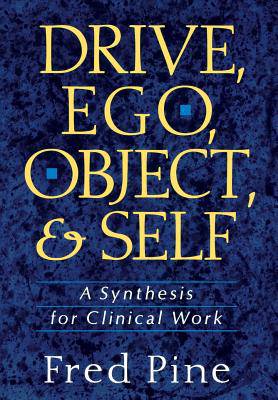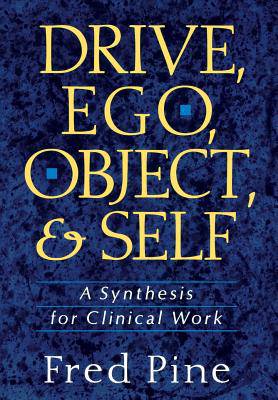
Je cadeautjes zeker op tijd in huis hebben voor de feestdagen? Kom langs in onze winkels en vind het perfecte geschenk!
- Afhalen na 1 uur in een winkel met voorraad
- Gratis thuislevering in België vanaf € 30
- Ruim aanbod met 7 miljoen producten
Je cadeautjes zeker op tijd in huis hebben voor de feestdagen? Kom langs in onze winkels en vind het perfecte geschenk!
- Afhalen na 1 uur in een winkel met voorraad
- Gratis thuislevering in België vanaf € 30
- Ruim aanbod met 7 miljoen producten
Zoeken
€ 79,95
+ 159 punten
Omschrijving
In this important new book, the noted theoretician Fred Pine provides a synthesis of the four conceptual domains of psychoanalysis: drives, ego functioning, object relations, and self experience. He argues that a focus on the clinical phenomena themselves, and not on the theoretical edifices built around them, readily illuminates the inevitable integration of the several sets of phenomena in each person's unique psychological organization. With superb clarity, Pine shows how one or another or more of these becomes central to a particular individual's psychopathology. Drawing on a wealth of detailed clinical material -- brief vignettes, process notes of sessions, and full analyses -- he vividly demonstrates how a broad multimodel perspective enhances the treatment process, and is, in fact, its natural form. He also applies these ideas to such crucial clinical issues as preoedipal pathology and ego defect, the so-called symbiotic phase, and the mutative factors in treatment. Conceptually elegant and immensely practical, this highly original work is certain to be, in the words of Arnold Cooper, "a guide for theorists and clinicians for many years to come."
Specificaties
Betrokkenen
- Auteur(s):
- Uitgeverij:
Inhoud
- Aantal bladzijden:
- 288
- Taal:
- Engels
Eigenschappen
- Productcode (EAN):
- 9780465017225
- Verschijningsdatum:
- 2/04/1990
- Uitvoering:
- Hardcover
- Formaat:
- Genaaid
- Afmetingen:
- 165 mm x 243 mm
- Gewicht:
- 589 g

Alleen bij Standaard Boekhandel
+ 159 punten op je klantenkaart van Standaard Boekhandel
Beoordelingen
We publiceren alleen reviews die voldoen aan de voorwaarden voor reviews. Bekijk onze voorwaarden voor reviews.









